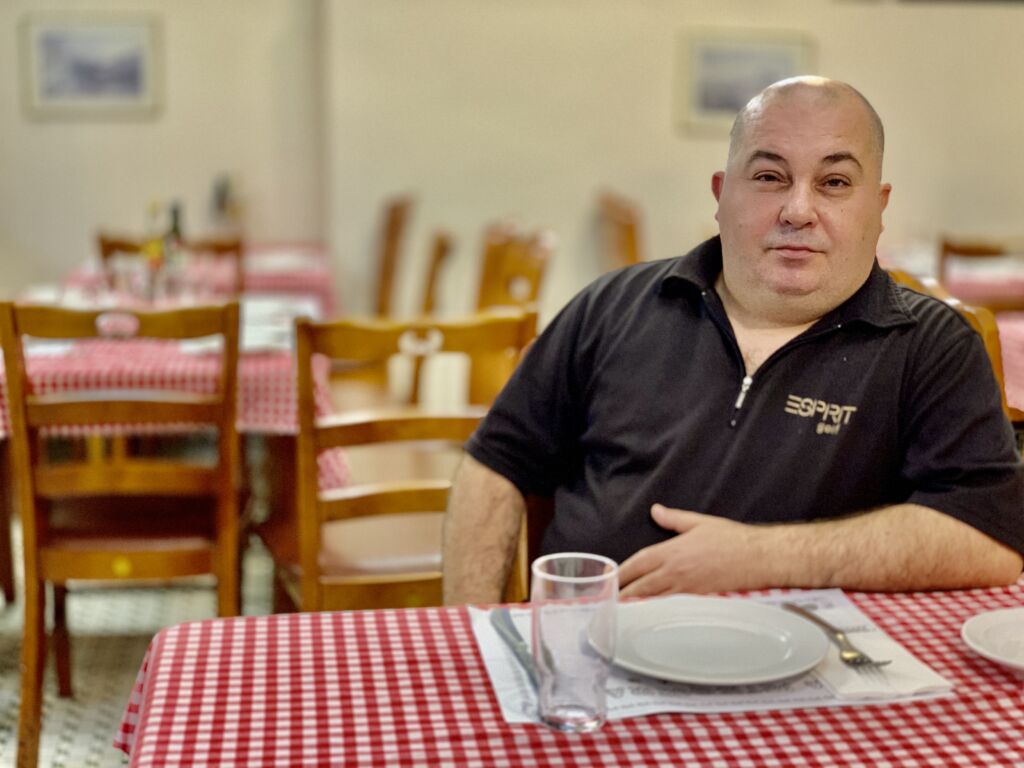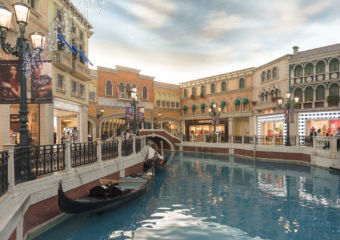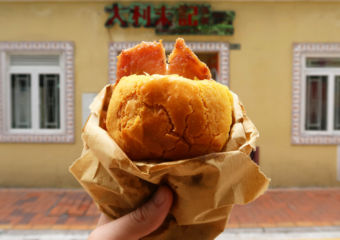Painted in bright yellow and blue, the wooden corner house set in Taipa Village is unmistakable. Petisqueira has become synonymous with tradition, comfort food and a home for everyone looking for the most authentic experience of Portuguese dining. With chequered table cloths, decorative fruits on the walls and a board with the specials menu, this is definitely a to-go place when searching for the best that Portugal has to offer.
In the beginning, plans didn’t include their now so famous Portuguese codfish or charcoal grilled sardines and steaks, nor their great “cozido”; what was it then? We sat down with one of the owners, Eusébio Tomé, to find out more on how Petisqueira kicked off, what are their most requested dishes and why is this restaurant so homely to both local Portuguese and tourists.
World-renowned Fado singer Amália Rodrigues had a song of hers eternalized for all times. It goes like this:
“In a Portuguese home looks good
Bread and wine on the table
And if someone humbly knocks at the door
Is welcome to our table (…)
Two open arms waiting for me
It’s a Portuguese home, for sure
It is surely a Portuguese home”
At Petisqueira, expect a wholesome, comforting Alentejo soup—commonly known as açorda–made with bread, fresh cilantro, olive oil, codfish and a great deal of care. Wait for homemade, fresh cottage cheese and have it with warm bread, or go for the seafood feijoada stew to appease your tummy and spark joy in your heart. This quirky Portuguese restaurant has been in the same place for almost 30 years and it’s a landmark when it comes to lusophone heritage on this side of the world. Standing more than 10,000 km away from Portugal, Petisqueira has become a home for some, looking for a familiar place, face and flavors.
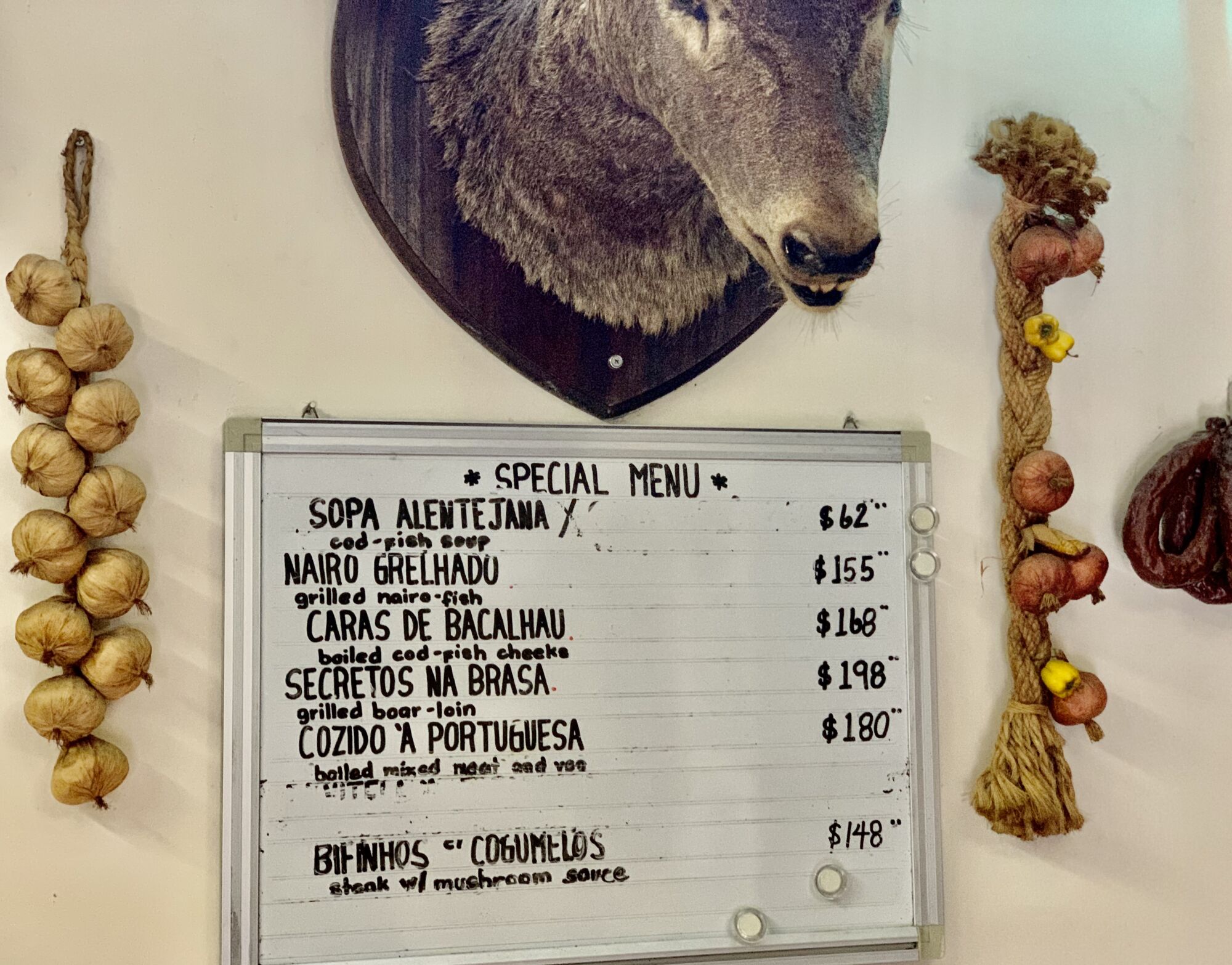
Petisqueira is a Portuguese restaurant in Macau. Can you tell us a bit about how it all started?
We (my business partner and I) started in 1993. Initially, we only opened for friends and family–in May, 1993–having officially opened a month later. Macau was still run by the Portuguese government at that time and there were still plenty of Portuguese living here. It didn’t take long–around six months–for the restaurant to start being filled with people and this became a meeting and get-together place for everyone. I came to Macau–together with a cousin of mine–in 1982 when we were still young. I started working in a restaurant where a cousin of mine also worked. I had 10 years of experience working in this field and after that, I just felt that it was time to make it on my own and establish a business myself.
Did you also have non-Portuguese people eating at the restaurant?
First it was the Portuguese, but Macau’s other communities soon started to embrace it as well. Especially locals, but also a lot of Hong Kong people, who traveled to the city from time to time and enjoyed dining at Petisqueira. Even after the government changed–a time of uncertainty for everyone because we didn’t know what the future had in store–we didn’t have strong drops in business.
For those out there who don’t speak Portuguese, what does Petisqueira mean? And why this name? What’s the story behind it?
When we opened, in 1993, the idea was actually to just serve appetizers, what people now call tapas. “Petiscos” means appetizers, tapas, small-sized dishes to share. Since that’s what we initially aimed to serve, we went for a name that would reflect that–”Petisqueira” would mean “a place where there are appetizers, tapas”.
We started by just having tapas, which we still serve today. Homemade cottage cheese, octopus salad, bulhão pato clams (with garlic and lemon sauce), sandwiches and others. It started this way, but things soon developed. People were asking for more complete dishes, mains like steak, lagareiro (oven roasted) octopus, among others. That’s how we turned into a proper restaurant. The name might not make much sense now, but it’s part of how we started, and we never changed it. Now everyone knows Petisqueira.
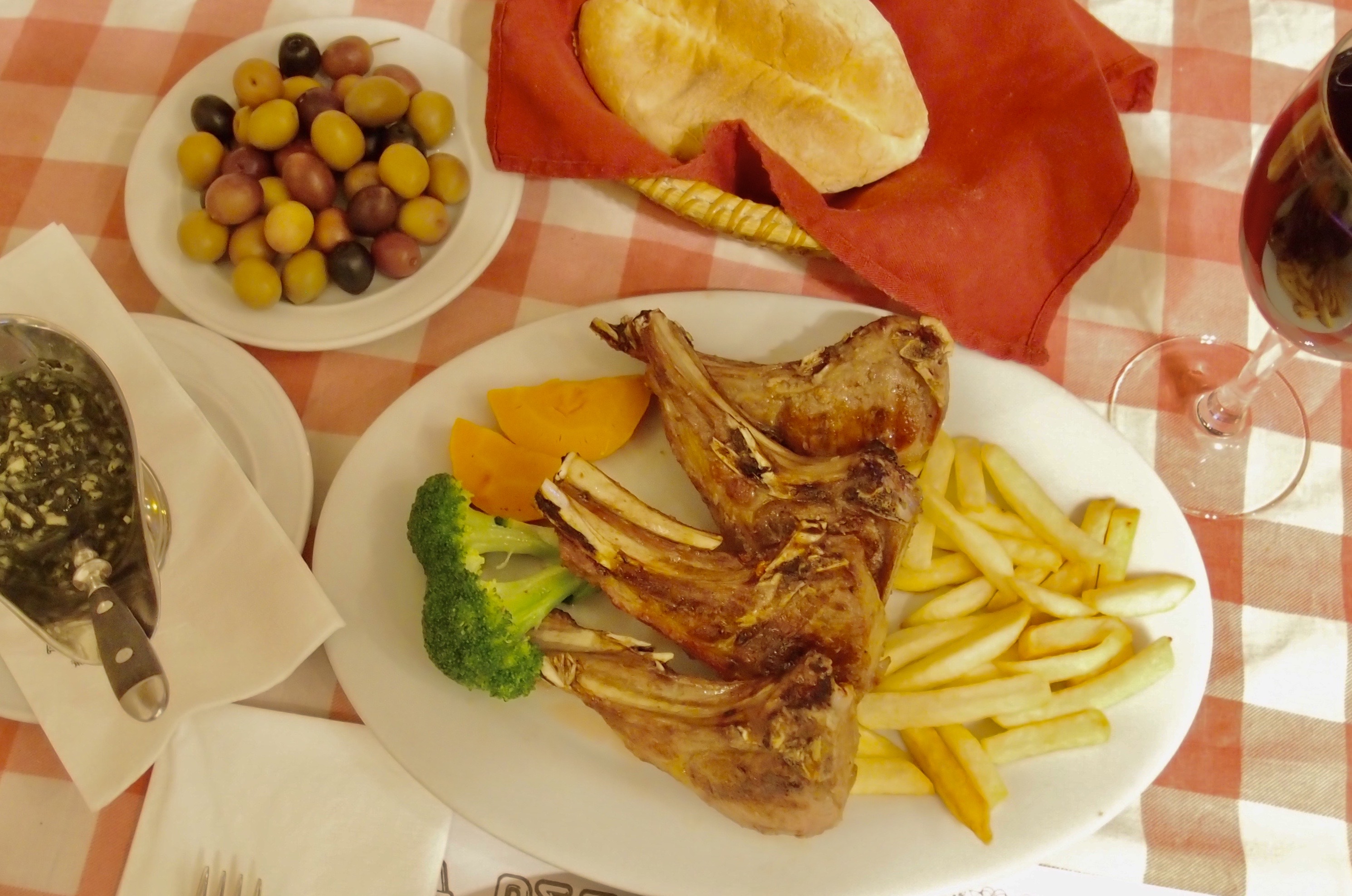
Lamb chops. Photo credit: Petisqueira
How did you end up in such a location and for how long have you been here?
We were always here, since the beginning. I like being located in old Taipa Village as we are set halfway between the Cotai casinos and hotels, and the Macau side. Many live here in Taipa side, which is great because they can easily grab some food at lunch or dinner. We’re quite lucky. However, at the time, Taipa–and this area–weren’t so popular nor populated. Circumstances led us here–this space became available and we took it. We worked mainly with locals and this was a very calm area. Tourists started coming with time; we have a lot of Koreans, Japanese, Hongkongers, among others coming to visit.
How would you describe the food at Petisqueira to someone who has never had it?
I usually take the time to explain the details of our food’s history to the customers who have never had Portuguese food. I talk about our salted codfish’s history, for example, to help them understand more about our cuisine.
Do you alter the recipes to cater to the local palate?
No. I believe we have to stick to true flavors and that palate is a matter of getting used to it and that improves with knowledge and experience. When I came to Asia, I didn’t like spicy food because I wasn’t used to have them. I then tried it and got into it. Nowadays, I have lots of Chinese customers who have never been in Portugal and still love to come here and eat Portuguese food.
What is the style of food that you serve?
We are a Portuguese traditional food restaurant. At Petisqueira, expect to eat exactly the same as you would in Portugal. There are no differences.
What are the kitchen’s most signature dishes and most requested ones?
Definitely the bulhão pato clams, the cottage cheese, the seafood rice, and the lagareiro codfish. The Portuguese-style steak and the charcoal-grilled chicken are some of the most requested dishes.
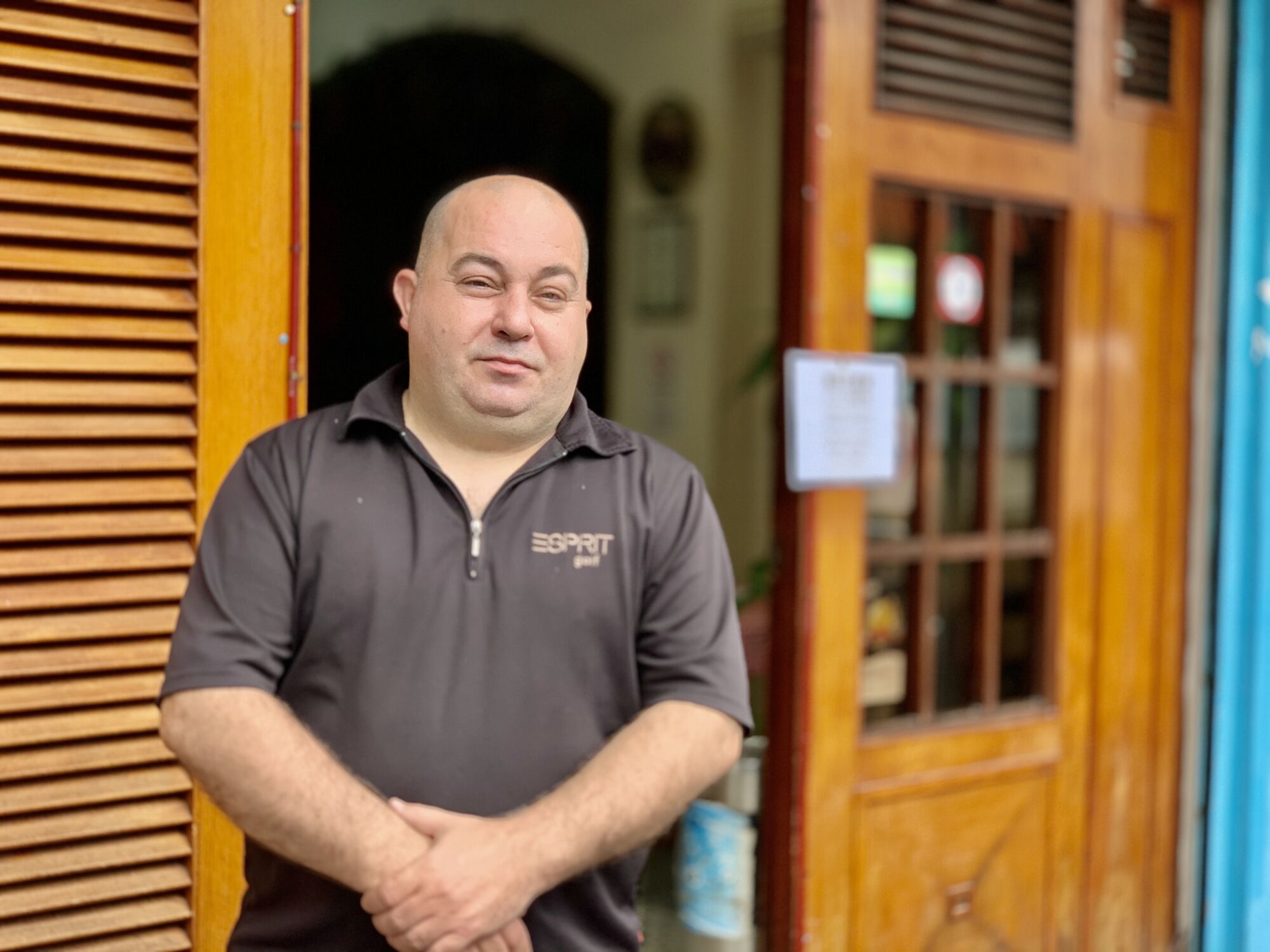
Is there anything on the menu that one can only find in your kitchen?
I’d say the homemade cottage cheese is something exclusive to Petisqueira. We also have great feedback regarding the clams; we store them in salted water, “live water”, which allows them to have a different flavor. The Portuguese-style steak is also a recipe of ours.
Is there a specific thing your restaurant has that is rarely found in Macau?
Our products are all fresh and we’re one of the only restaurants in town that has a charcoal grill station. We renovated many of our kitchen equipments for more modern and adequate ones. We spent around MOP $150,000 on this revamp. This is to say that all the grilled dishes–including fish and chicken–are made in charcoal, allowing a unique flavor.
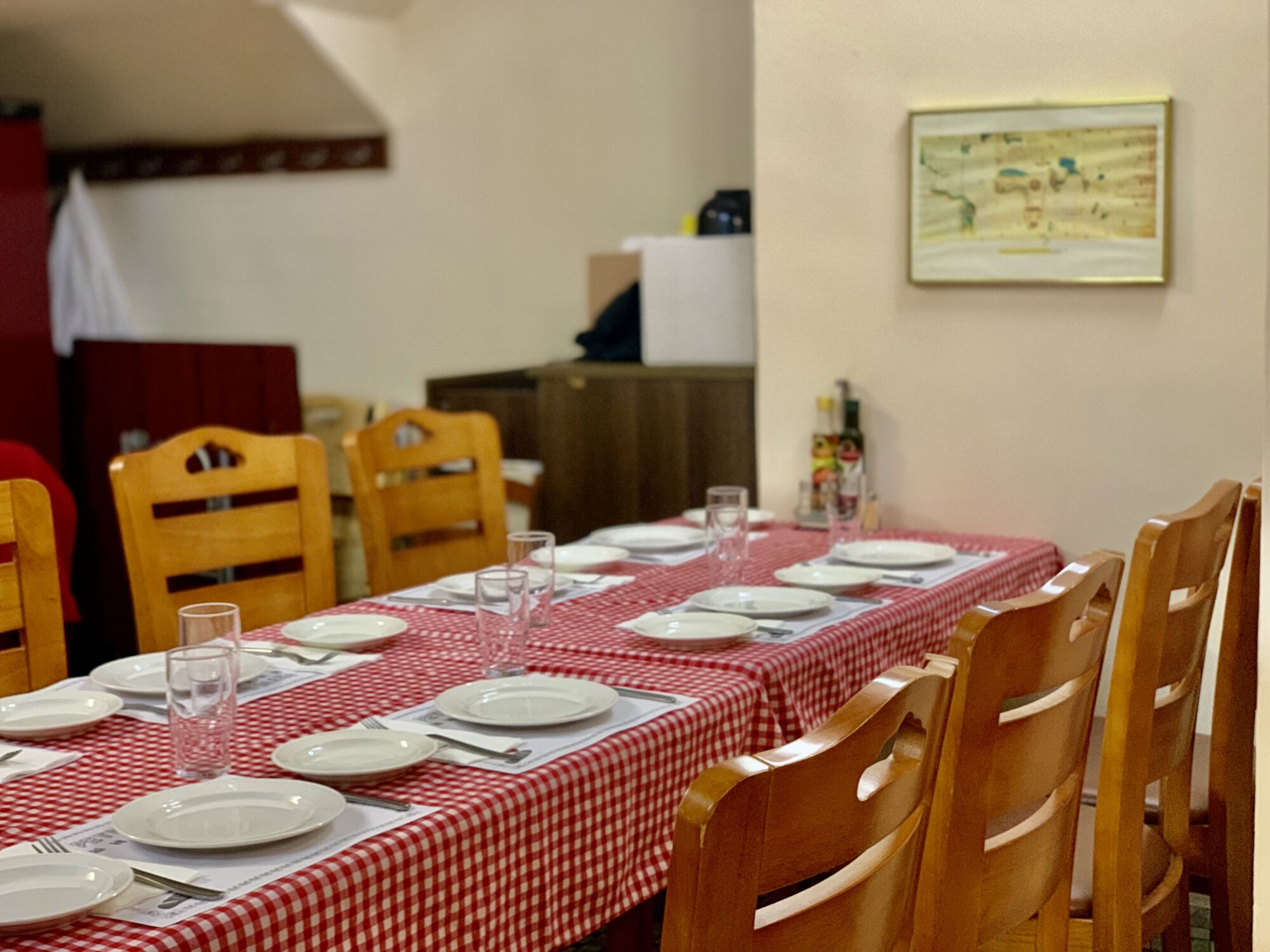
Were you the one to bring the recipes to the restaurant?
No, it was my business partner. He was a chef before opening the restaurant. One of the greatest things we did was keeping our team from the start. We believe in keeping the flavors as they are, in maintaining a level of quality that keeps people coming again and again. If someone tried the lagareiro codfish, liked it and returns to have it a second time, we must deliver the same taste and experience.
Was it always a dream of yours, to open a restaurant?
Yes, I’d say so. When you start in a business, you get familiar with it and eventually want to start one of your own. We came with a two-year contract but decided to stick around longer.
Would you say you fell in love with Macau?
One can say that–yes (laughs). At the start, I was working and studying at the same time, then started making friends and everything. Macau is greatly located. We’re right in the middle of Asia and within four hours or so, one can travel to a lot of places.
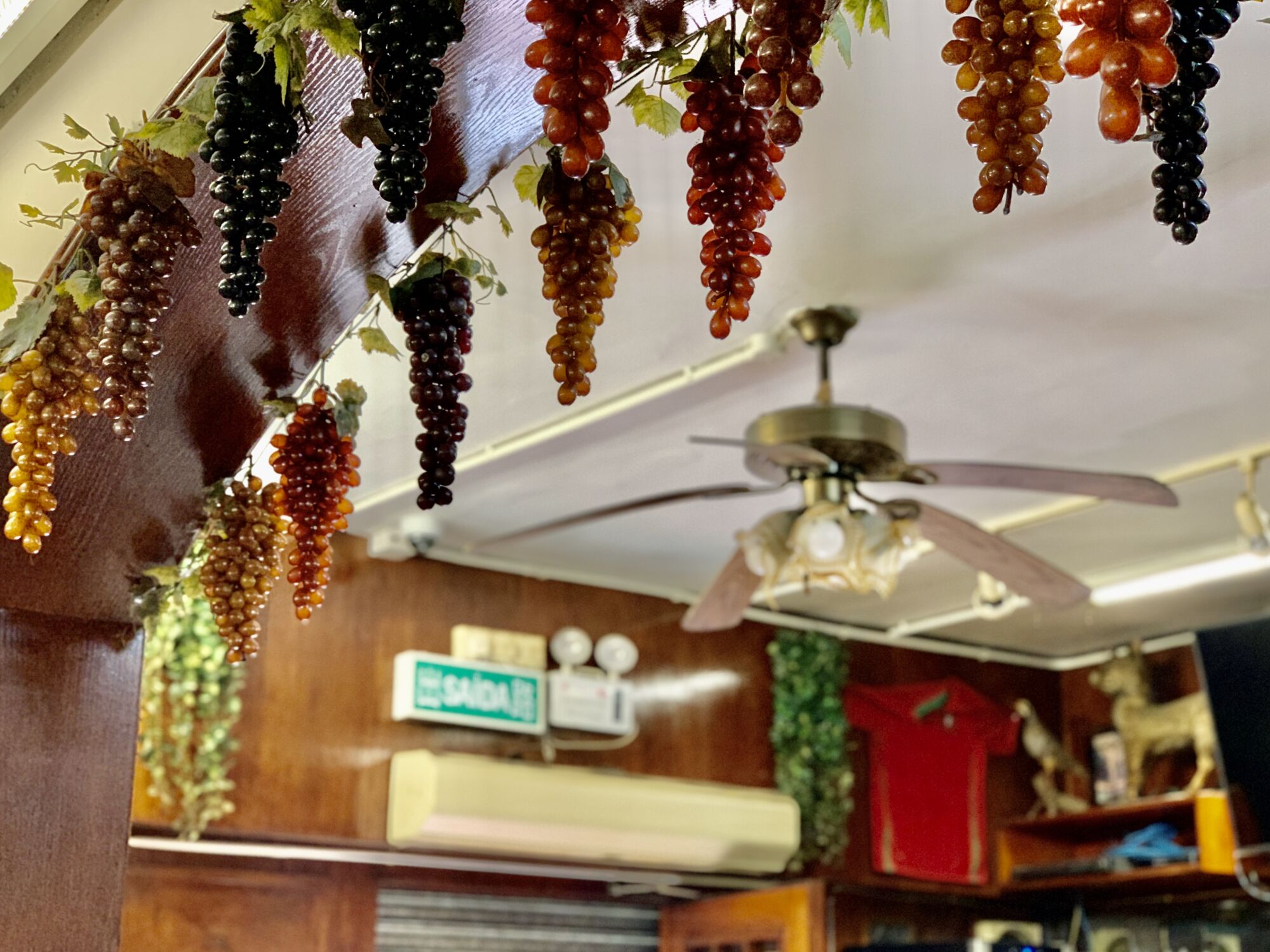
What do you do in your free time?
I am a scuba diver and I’m in a great location to do that. Some people like golf, others like fishing. I like scuba diving and love traveling to the Philippines and other places in Asia to do so. I love seeing all the animals down there, to bring the camera and take photos. It’s really amazing. I took the course 20 years ago and then took several of them in the Philippines, South Korea and other places as well.
What are your favorite memories of Macau?
Macau was an incredibly peaceful place back in the day, what Hong Kong called “the enclave”, a little village. Things changed drastically with the gambling monopoly when there were huge investments towards that industry. It was great, of course, but it also had negative impacts. Prices spiked, as it happened with house rentals–a four or five-bedroom apartment would cost around MOP $2,000 a month, while today costs more than MOP $20,000. We didn’t have all the hustle and bustle of this people’s traffic that we see nowadays, for example.
Petisqueira 15 C-D Rua de S. João, Taipa, +853 2882 5354, apetisqueira.com/en/home

